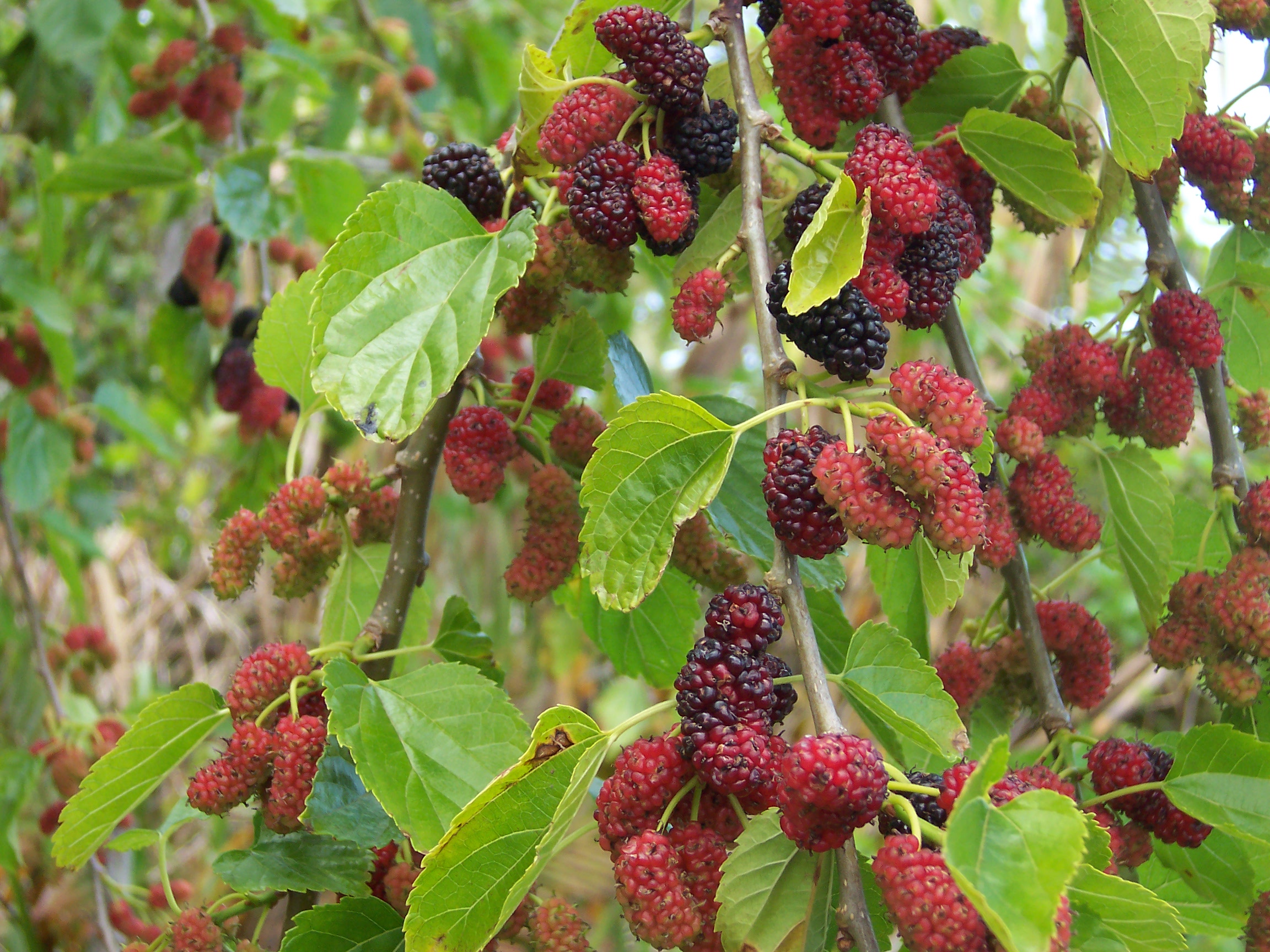For a long time I looked over descriptions of forest gardening. I like the idea of growing lots of perennial plants since I will almost certainly be too lazy to replant more than a couple plants every summer. I don't have room for many fruit trees though. I will probably plant some perennial vegetables and herbs but I have decided to settle on berries.
Berries have an unusual distinction of being comparatively easy to grow and expensive to buy. There is also a huge diversity of them many of which are not commonly available in stores.
I am starting with a mulberry tree. This is one troublesome tree however. They are about the messiest tree you can find and get huge. If I was to plant one of the larger varieties I would end up with a tree taller than my three story house covering the whole area with fallen berries. So I settled on a dwarf mulberry tree. So far I have found a decent dwarf black mulberry, dwarf red mulberry, and dwarf weeping mulberry. Probably I will just go with the black mulberry, but if I find I have room perhaps I will get a red as well. They fruit in different months so they work well together.
Then I want a few native berries. The best choices I seem to have are golden currants, and nevin's barberry.
At least the first year I will try a couple annual berries: cape gooseberry, green grape tomato, strawberry spinach, chinese 5 color pepper. OK, so I stretch the definition of berries pretty far. Once the larger perennial berries have a few years to grow I expect to not have much room for annuals, but in my climate the hot peppers will probably live for several years and may be able to compete for space.
Strawberries seem like they would also fit in well. I will probably plant a half dozen varieties and just see what grows best. Perhaps I will try some of the smaller varieties. Smaller strawberries sound like they might be a fun way to go. I am not sure they can match the productivity of newer varieties though.
Raspberries work reasonably well in Southern California. I haven't picked a variety and will probably just grab one at random from a nursery I trust.
Blueberries may or may not work well in my area. I have heard that they are starting to have some varieties which work well in California so I will at least have to try.
Goji berries are another interesting berry which I will try. It sounds a bit fussy though so I am not sure how likely I am to succeed.


.jpg)
